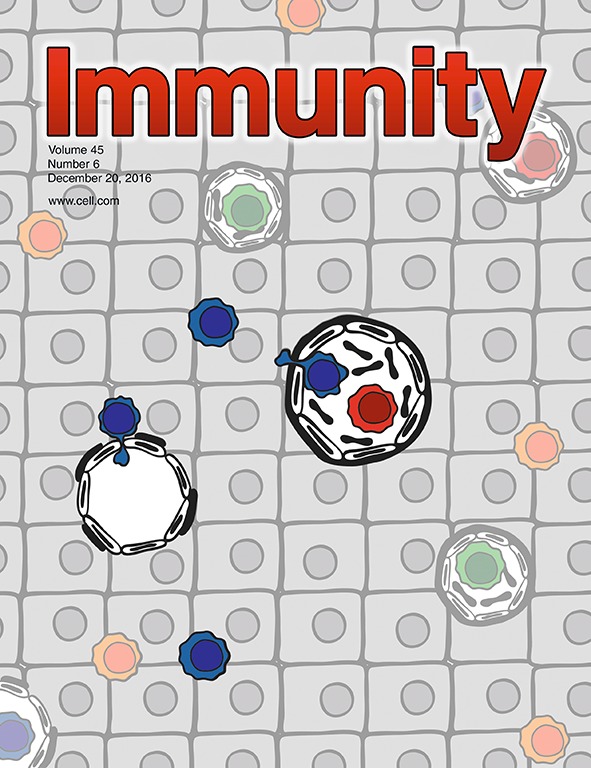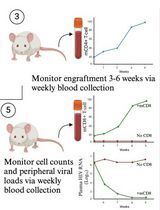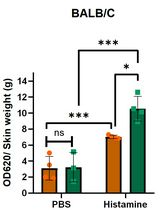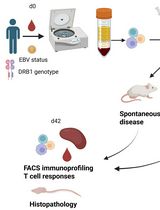- EN - English
- CN - 中文
Instillation of Particulate Suspensions to the Lungs
将颗粒悬浮物滴注至肺部
发布: 2017年11月20日第7卷第22期 DOI: 10.21769/BioProtoc.2618 浏览次数: 8252
评审: Ivan ZanoniAchille BroggiAnonymous reviewer(s)
Abstract
Inhaled fine particulates are thought to cause chronic pulmonary inflammation through the deposition of particulates into the lungs. To investigate the effect of fine particulates on the lungs, instillation of suspension of particulates into the lungs is required. This protocol describes direct injection of suspensions of fine particulates into the airway. We also show examples of typical lung immune responses after particulate administration.
Keywords: Particulates (颗粒)Background
Recently, many studies have demonstrated that particulate pollutants such as diesel exhaust particles, sand dusts and particulate matter 2.5 (PM 2.5), are involved in chronic pulmonary inflammation leading to lung cancer or allergic asthma. Epidemiological analysis revealed that increased particulate air pollution is related to increased asthma hospitalization. In general, upon inhalation, fine particles, such as PM 2.5, are known to reach deep into the lungs. Instillation of suspensions of particulates into the lungs has been widely used for understanding pulmonary inflammation induced by deposited particulates (Morimoto et al., 2016).
Materials and Reagents
- Pipet tip for gel loading (Vertex-GL 200 μl gel-loading tip) (SSIbio, catalog number: 4837-S0S )
- Parafilm
- 1 ml sterile syringe (without needle) (TERUMO, catalog number: SS-01T )
- Mice (C57BL/6, BALB/c etc.)
Note: For training, bigger mice (aged male mice) are better.
- Alhydrogel (InvivoGen, catalog number: vac-alu-250 ) as particulate for instillation
Note: Alhydrogel (alum) is suspended in dH2O. For instillation of alum into the lungs, buffer exchange is required. Centrifuge a suspension of alum in a microtube at 2,000 x g for 2 min. Discard supernatant (H2O) and add an equal volume of saline or PBS. Mix well and centrifuge again. Repeat this procedure five times to exchange H2O to saline or PBS. Finally, adjust the concentration of alum to 2 mg/ml in saline and use for instillation.
- Anesthetic (ketamine/xylazine mixture)
Note: 10 ml of Ketalar (Ketamine, 50 mg/ml, Daiichi Sankyo Co. Ltd., Tokyo, Japan) is mixed with 2.2 ml of Selactar (Xylazine, 20 mg/ml, Bayer HealthCare Ltd., Tokyo, Japan). Anesthetize mice with 50 to 75 μl of ketamine/xylazine mixture by s.c. injection into the back.
Equipment
- Ear pick earwax remover with light (Japan Smile Kids)
Note: Before use, silicone rubber at the tip of ear pick will be removed (Figure 1).
- Stainless steel micro spatula (Figure 1) (ASONE, catalog number: 9-891-02 )
Note: This is used as a tongue depressor, so small size is better.
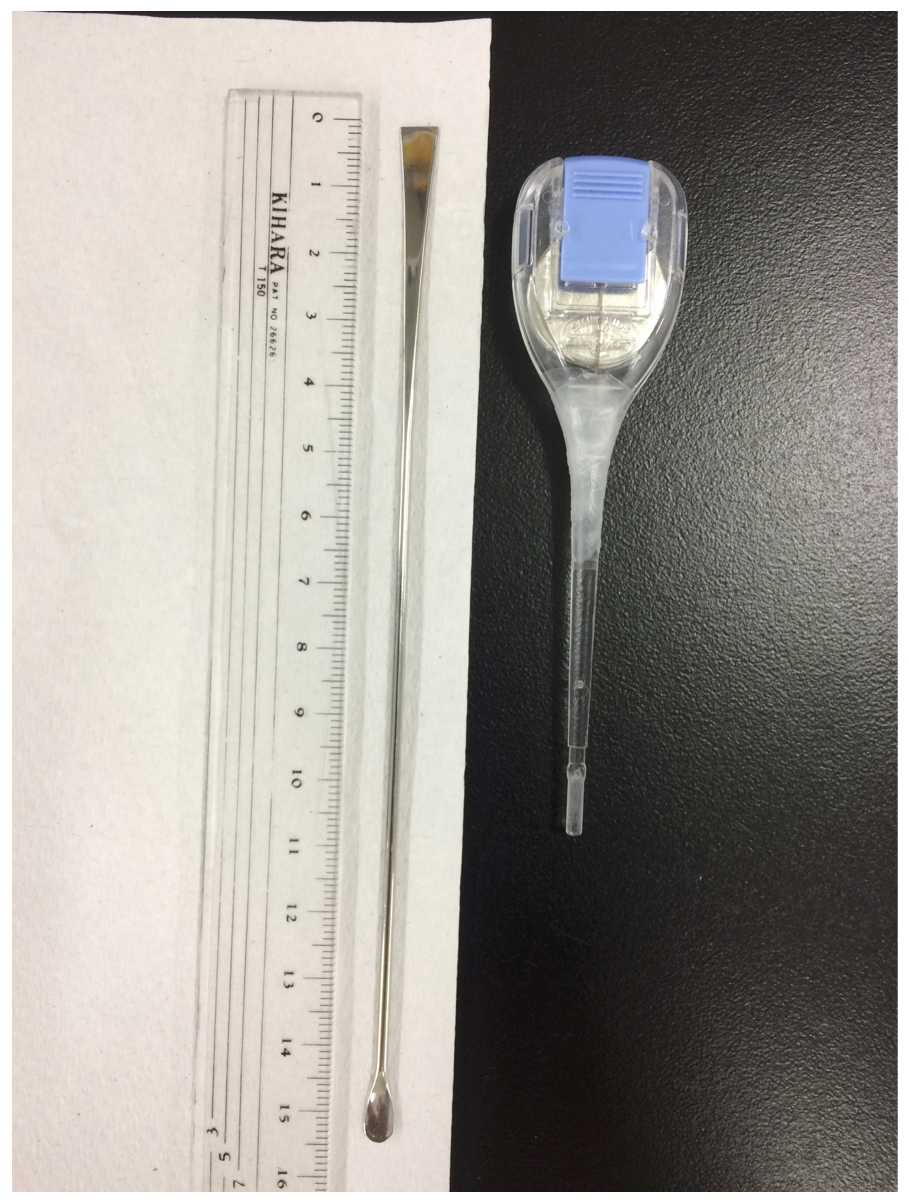
Figure 1. Ear puck with light and spatula
- Platform for instillation into the lungs. As shown in Figure 2, stretch a string across the wooden (cork) board (approximate size: 20 x 30 cm)
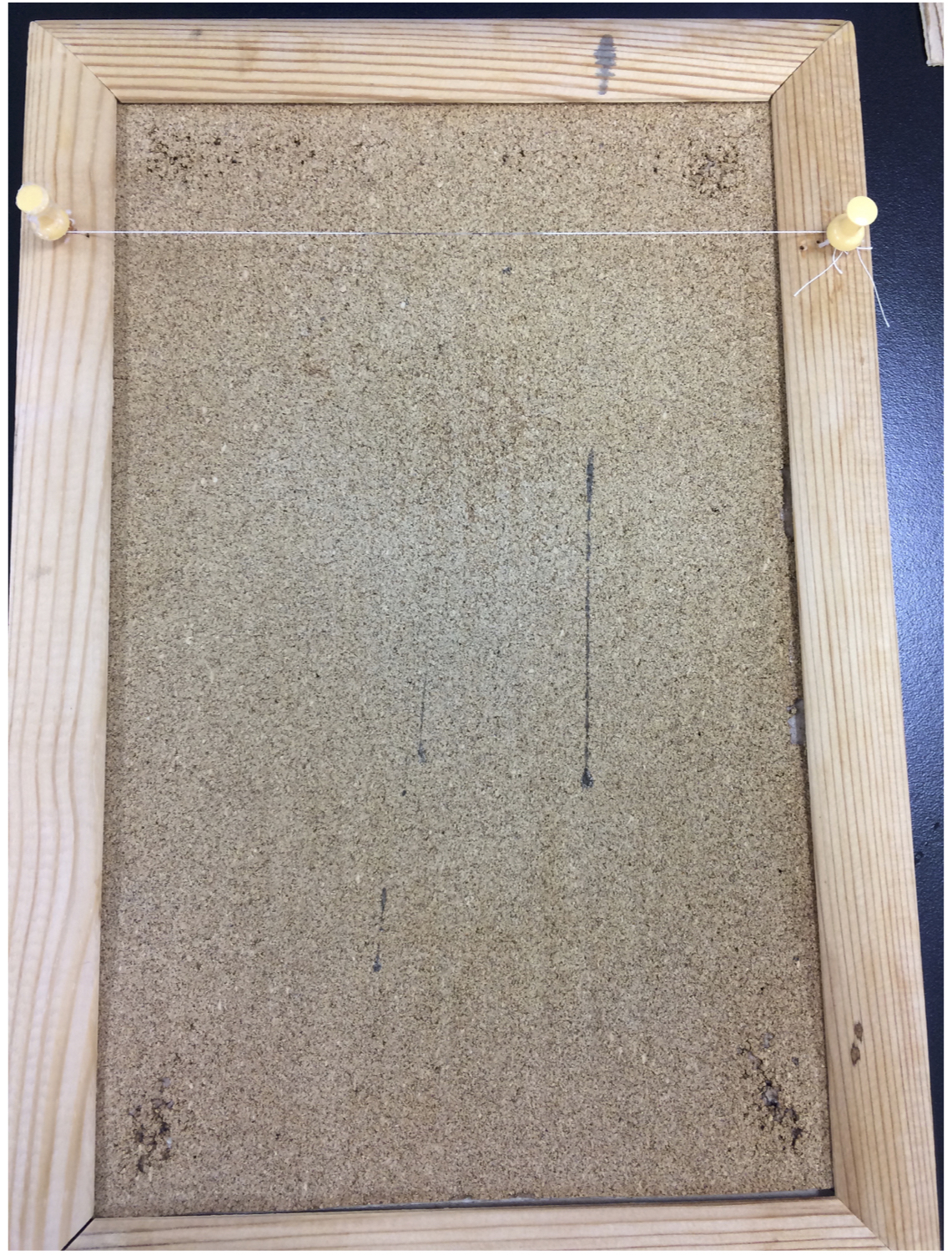
Figure 2. Platform for instillation into the lungs
- Injector for instillation (Figure 3)
- FACS analyzer
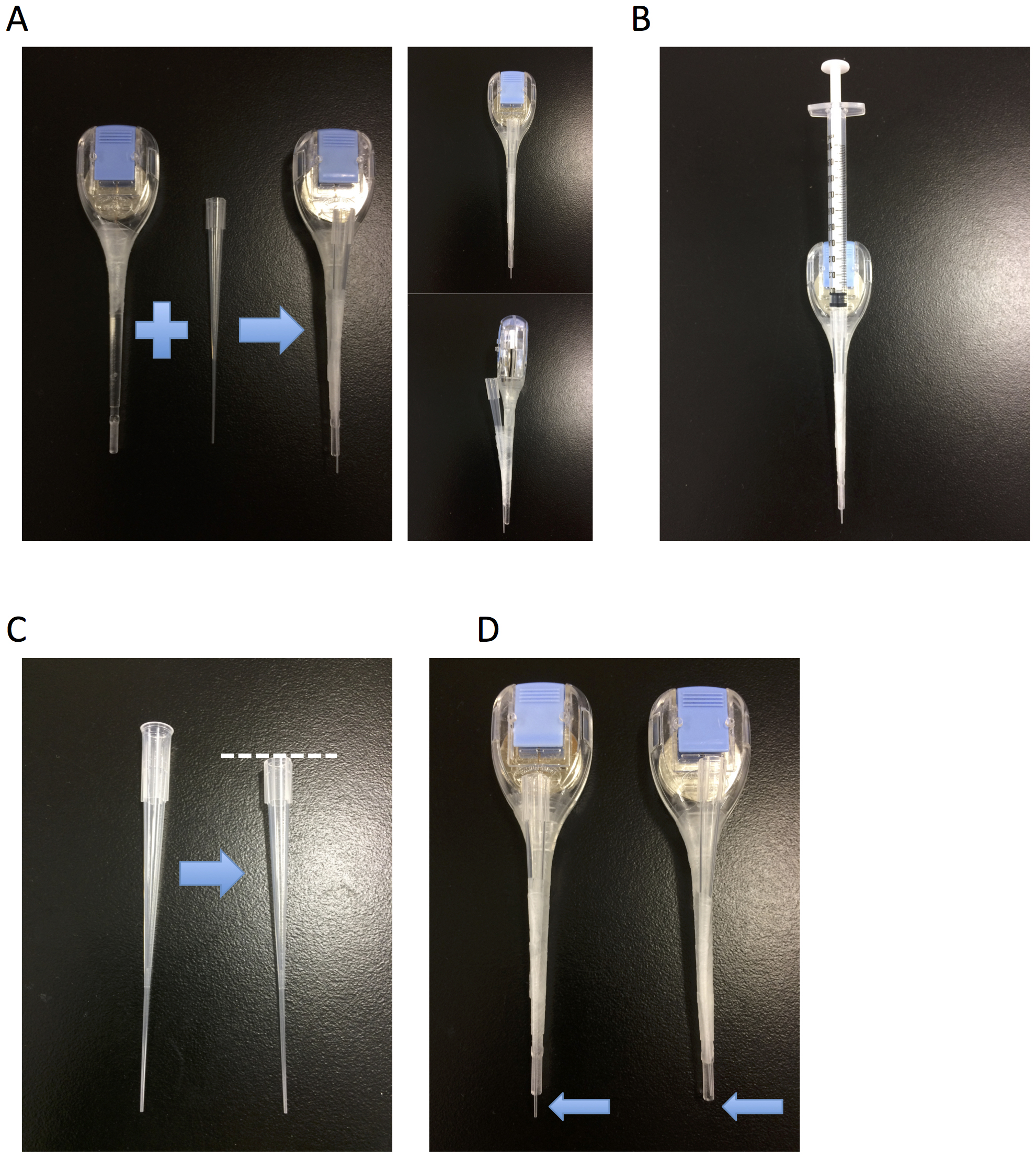
Figure 3. Injector for instillation. A. Fix a thin pipet tip to the ear pick by Parafilm. B. Attach a syringe to the pipet tip. C. If needed, cut the top of pipet tip to adjust for syringe insertion. D. Cut the edge of the pipet tip (arrow) for injection.
Procedure
文章信息
版权信息
© 2017 The Authors; exclusive licensee Bio-protocol LLC.
如何引用
Kuroda, E., Morimoto, Y. and Ishii, K. J. (2017). Instillation of Particulate Suspensions to the Lungs. Bio-protocol 7(22): e2618. DOI: 10.21769/BioProtoc.2618.
分类
免疫学 > 动物模型 > 小鼠
细胞生物学 > 组织分析 > 生理学
您对这篇实验方法有问题吗?
在此处发布您的问题,我们将邀请本文作者来回答。同时,我们会将您的问题发布到Bio-protocol Exchange,以便寻求社区成员的帮助。
提问指南
+ 问题描述
写下详细的问题描述,包括所有有助于他人回答您问题的信息(例如实验过程、条件和相关图像等)。
Share
Bluesky
X
Copy link


